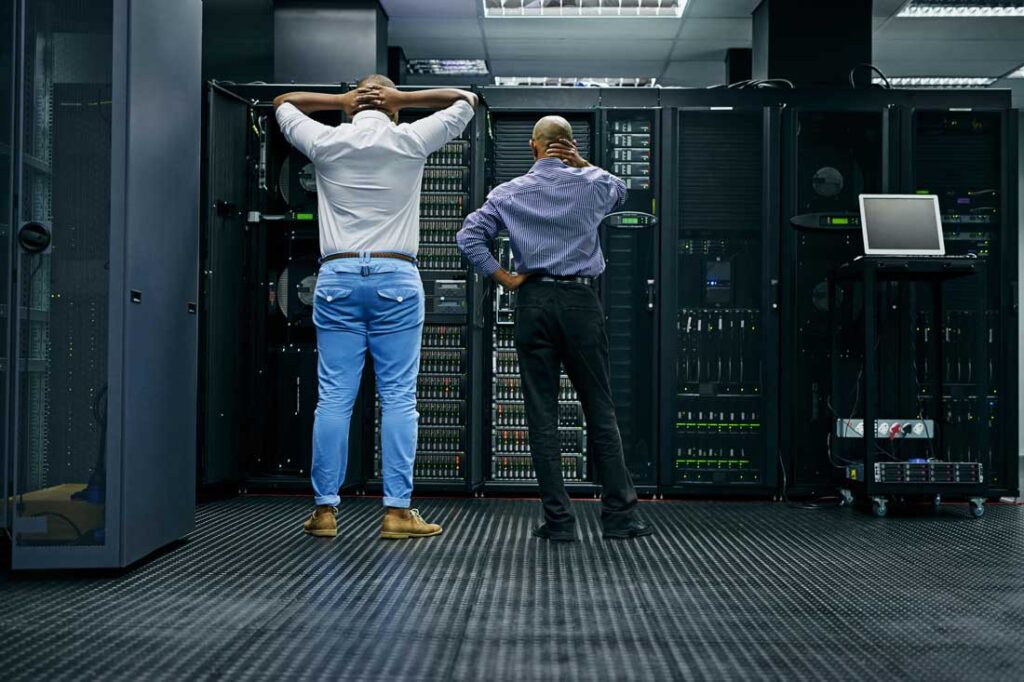On Thursday night, July 18, and into the wee hours of the following morning, a faulty software update reminded us all how dependent we are on the fragile, technology-based infrastructure quietly powering our doctor’s appointments, flight schedules and bank account access. The global IT outage impacted countries around the globe, with the cybersecurity company CrowdStrike behind the issue.
Sean Connery, co-founder and chief security officer at Orbis Solutions, Inc., shared part of the message his leadership team sent to their clients on Friday:
“Over the last 10–12 hours, reports of a massive IT outage experienced across the globe have been reported. Current intelligence puts the blame on a faulty CrowdStrike update causing Windows systems to experience instant blue screen of death crashes, often sending systems into an infinite boot loop. This update seems to affect hosts utilizing CrowdStrike EDR’s (Endpoint Detection and Response) Falcon Sensor. …However, the shockwaves from this outage are massive as airlines, banks, telecoms, medical services and other forms of critical infrastructure are experiencing serious availability issues as a result. So far, all intel points to this being a faulty update and not a global cyber-attack.”
For those who don’t speak tech, Connery breaks it down further. “CrowdStrike is a cybersecurity company and one of their products is Falcon, an endpoint detection and response tool which is a big upgrade from anti-virus programs,” he shared in an interview with SUCCESS. “They released an update, and now when you boot your Windows computer you get a blue screen of death, meaning you can’t use your computer. There is a fix: Boot [your] computer in safe mode and delete this update. For larger companies affected, this will take time to go from computer to computer deleting this update.”

Bad actors and canceled appointments—the dangers of global IT outage events
But as in any disaster, from technology outages to weather events, bad actors capitalize on the chaos.
“Threat intelligence sources have observed opportunistic activity from threat actors impersonating CrowdStrike support for users whose systems are down. Please ensure you are in direct contact with a legitimate CrowdStrike representative,” Connery’s message also stated.
He adds: “Cyber criminals and phishing [attempts] fake fixes to get paid or ransom them.” So, while the worst is likely over, those looking for tech support should be cautious of additional threats.
For most Americans, days after the outage, direct implications might mean rescheduling flights or doctor’s appointments, as well as waiting for support if your small business was impacted.
For example, Cincinnati Children’s health system shared the following message to social media on Friday: “Many of our Microsoft-based computer systems are down because of the worldwide technology outage.”
The medical center canceled morning appointments and shared that “delays are likely, and families should plan to be here longer than originally planned.”
Will a global IT outage happen again?
Now, all eyes are on the future as industry leaders try to determine why this happened and how global IT outages can be prevented from happening again.
There are two elements that answer the latter: prevention and the fallout. For example, if a train schedule isn’t able to be regulated, things can get dangerous.
But these types of concerns are issues tech companies seek to prevent—and minimize damage from—quite often.
For example, the 2038 problem will remind many who are old enough to remember the confusion around Y2K. Tech leaders are working now to prevent an issue that would result in software systems setting back their time to the year 1901 for programs that run on “Unix” time systems in January of 2038. So while a global outage seems catastrophic to a layperson (as it was for many industries), it’s also not the first or last outage industries will encounter.
What can companies do to prepare for a global IT outage?
Experts are urging a variety of industries to update their emergency procedure plans, should a global IT outage happen again. But for those reliant on that very technology, it’s not always possible to predict, respond and mitigate the consequences of these events.
For example, two days after this outage, United States airlines continue to struggle with delays and cancellations. On Sunday, FlightAware, a database of the status of flights around the country, recorded more than 34,000 delays and over 2,000 cancellations. When the “blue screen of death” appeared on so many Microsoft Windows operating systems, everyone got a glimpse of what can happen again.
Both businesses and individuals can prepare now for future events, similar to and more elaborate than the one that just happened. Experts suggest thinking through how you’d function and keep basic and business needs met without internet, including:
- Having cash available. If ATMs and banks are disrupted, you might not be able to obtain money.
- Having backup processes for businesses. While it might seem unfathomable to run a business without internet even for a short time, thinking through possibilities ahead of time can lead to some out-of-the-box solutions to employ later.
- Checking your supplies. Do you have a landline phone and a radio? Do you have a backup generator and a basic shelter-in-place supply kit? Each can be essential for more devastating attacks.
While living in a tech-based world can feel scary and out of control, individuals and businesses alike can use this as a warning and take advantage of the opportunity to be as prepared as possible for future outages.
Photo by PeopleImages.com – Yuri A/Shutterstock.com





